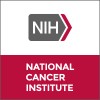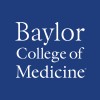
PXD101 and 17-N-Allylamino-17-Demethoxygeldanamycin in Treating Patients With Metastatic or Unresectable...
Adult Nasal Type Extranodal NK/T-cell LymphomaAnaplastic Large Cell Lymphoma59 moreThis phase I trial is studying the side effects and best dose of giving PDX101 together with 17-AAG in treating patients with metastatic or unresectable solid tumors or lymphoma. PDX101 may stop the growth of cancer cells by blocking some of the enzymes needed for cell growth and by blocking blood flow to the cancer. Drugs used in chemotherapy, such as 17-N-allylamino-17-demethoxygeldanamycin (17-AAG), work in different ways to stop the growth of cancer cells, either by killing the cells or by stopping them from dividing. Giving PXD101 together with 17-AAG may kill more cancer cells.

Study to Evaluate MEDI-507 in Patients With CD2-Positive Lymphoma/Leukemia
LymphomaLeukemia1 moreFor primary objectives, we will determine the MTD and examine clinical responses and immune cell populations to determine an OBD, and describe the safety and tolerability of MEDI-507. For the secondary objectives we will look at the antitumor activity of MEDI 507, PK, serum concentrations, and immunogenicity of MEDI-507, as well as time courses of depletion and recovery of CD2 positive and total T-Cell populations.

Flavopiridol in Treating Patients With Relapsed or Refractory Acute Myeloid Leukemia, Acute Lymphoblastic...
Adult Acute Basophilic LeukemiaAdult Acute Eosinophilic Leukemia17 moreThis phase I trial is studying the side effects and best dose of flavopiridol in treating patients with relapsed or refractory acute myeloid leukemia, acute lymphoblastic leukemia, or chronic myelogenous leukemia. Drugs used in chemotherapy, such as flavopiridol, work in different ways to stop the growth of cancer cells, either by killing the cells or by stopping them from dividing.

Total-Body Irradiation, Fludarabine, and Alemtuzumab Followed By Stem Cell Transplant in Treating...
Chronic Myeloproliferative DisordersLeukemia1 morePatients are being asked to participate in this study because they have a malignant blood disease such as Myelodysplastic Syndrome (MDS), Myeloproliferative Disorder (MPD), Acute Myelogenous Leukemia (AML) or Chronic Myelogenous Leukemia (CML). We feel that patients could benefit from an allogeneic (meaning the cells come from a donor other than themself) stem cell transplant. The donor would be a family member or an unrelated person that is felt to be a good match for the patient. Stem cells are cells that are made in the bone marrow (spongy material that fills the middle of the bones). As the stem cells grow, they change into different types of blood cells that they need. This includes red blood cells that carry oxygen around the body, white blood cells that help to fight infections, and platelets that help to prevent and stop bleeding. Usually, patients are given high doses of chemotherapy before a stem cell transplant. High doses of chemo destroy the bone marrow. Healthy stem cells from a donor are then given to replace the patient's unhealthy cells. However, because of complications with the patient's disease, they have a high risk of having life-threatening side effects. These include serious damage to organs such as the lung, liver, kidney and heart. There is also an increased risk of bacterial, fungal, and viral infections. The other major problem is when a donor's stem cells (also called the graft) find that the patient's cells ( the host cells) are not the same. The donor cells may try to destroy the host's cells. The cells at high risk are those of the skin, liver and intestines. This is called graft versus host disease (GVHD) and it can be fatal. Recently, doctors have been able to use less toxic chemotherapy treatments before patients receive their transplants. This less toxic treatment helps reduce some of the treatment related problems mentioned above. Patient's are being asked to be involved in a research study that uses this approach. One major risk of this low dose treatment is that the patient's body may reject the donor cells. This is called graft rejection. This study is designed to see if this low dose treatment is safe and effective. This treatment plan adds CAMPATH 1H (a special protein called an antibody) to a low dose chemotherapy regimen. After chemo, the patient will receive an allogeneic (cells come from a donor) stem cell transplant. Adding CAMPATH 1H to the transplant medicines may help in treating the disease. CAMPATH 1H may reduce life-threatening and treatment related side effects like GVHD. CAMPATH 1H stays active in the body for a long time which means it may work longer to prevent GVHD. CAMPATH 1H destroys lymphocytes, a type of white cells that help fight infection, and this helps prevent graft rejection. We want to see if the addition of CAMPATH 1H to the patient's pre-transplant low dose chemotherapy will decrease the side effects from an allogeneic stem cell transplant, while providing a curative treatment for patients with blood disorders.

Sirolimus in Treating Young Patients With Relapsed or Refractory Acute Leukemia or Non-Hodgkin's...
LeukemiaLymphomaRATIONALE: Drugs used in chemotherapy such as sirolimus use different ways to stop cancer cells from dividing so they stop growing or die. PURPOSE: This phase I trial is studying the side effects and best dose of sirolimus in treating young patients with relapsed or refractory acute leukemia or non-Hodgkin's lymphoma.

Peripheral Stem Cell Transplant in Treating Patients With High-Risk Leukemia
Chronic Myeloproliferative DisordersLeukemia1 moreRATIONALE: Giving chemotherapy and total-body irradiation before a donor peripheral stem cell transplant helps stop the growth of cancer and abnormal cells and helps stop the patient's immune system from rejecting the donor's stem cells. When the stem cells from a related donor, that do not exactly match the patient's blood, are infused into the patient they may help the patient's bone marrow make stem cells, red blood cells, white blood cells, and platelets. PURPOSE: This phase II trial is studying how well peripheral stem cell transplant works in treating patients with high-risk leukemia.

Study for Patients With Relapsed or Refractory Acute Myeloid Leukemia (AML)
LeukemiaMyeloid1 moreThis is a phase 2, single-arm, open-label, multi-center study to establish the safety and efficacy of Troxatyl™ (troxacitabine) administered as a continuous infusion for 5 days to subjects with AML.

Vaccine Therapy in Treating Patients With Acute Lymphoblastic Leukemia
LeukemiaThe prognosis for children and adults with acute lymphoblastic leukemia (ALL) has improved significantly over the years. Nevertheless, patients who experience disease relapse or induction failure along with patients having unfavorable genetics [t(4;11) or t(9;22)] have dismal prognosis. For these patients, novel therapeutic approaches such as immunotherapy are needed. In this clinical trial, investigators evaluate whether it is feasible to make a vaccine from leukemia cells and whether this vaccine enables direct immunity against cancer cells in patients.

Cyclophosphamide and Filgrastim Followed By SCT in Patients With Chronic or Accelerated Phase Myelogenous...
LeukemiaRATIONALE: Giving colony-stimulating factors, such as G-CSF, and cyclophosphamide helps stem cells move from the patient's bone marrow to the blood so they can be collected and stored. Chemotherapy and radiation therapy is then given to prepare the bone marrow for the stem cell transplant. The stem cells are returned to the patient to replace the blood-forming cells that were destroyed by the chemotherapy and radiation therapy. PURPOSE: This phase II trial is studying how well cyclophosphamide plus filgrastim followed by stem cell transplant works in treating patients with chronic phase or accelerated phase chronic myelogenous leukemia.

Arsenic Trioxide With or Without Tretinoin in Treating Patients With Hematologic Cancer That Has...
LeukemiaLymphoma2 moreRATIONALE: Drugs used in chemotherapy use different ways to stop tumor cells from dividing so they stop growing or die. Tretinoin may help hematologic cancer cells develop into normal white blood cells. PURPOSE: Phase I/II trial to study the effectiveness of arsenic trioxide with or without tretinoin in treating patients who have hematologic cancer that has not responded to previous therapy.
